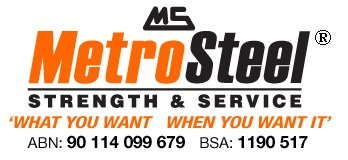 Metals may vary greatly from one to another in terms of strength, durability, and use, but one common factor that links them is that they can all suffer from corrosion. That said corrosion takes many forms and includes the most common type – rust! Corrosion is a serious problem for makers of structural objects such as buildings and bridges as well as boats and cars as it affects the overall structural integrity of the material causing it to weaken. So without further ado, let’s take a closer look at some of them.
Metals may vary greatly from one to another in terms of strength, durability, and use, but one common factor that links them is that they can all suffer from corrosion. That said corrosion takes many forms and includes the most common type – rust! Corrosion is a serious problem for makers of structural objects such as buildings and bridges as well as boats and cars as it affects the overall structural integrity of the material causing it to weaken. So without further ado, let’s take a closer look at some of them.
Uniform corrosion
Uniform corrosion (full name -Uniform Attack Corrosion) occurs as the name suggests in a uniform fashion over an exposed metallic surface. As an example, if an unprotected iron roof is exposed to periodic rainfall, it’s suffice to say that the roof in it’s entirety is likely to come into contact with equal (uniform) quantities of rain. Because of this it’s far more likely to corrode at the same rate. The simplest way to give it protection is to put a barrier between the iron roof and the corroding agents (in this case the rain water). Protective substances can be varied ranging from oil-based sealants through to paint and an electrochemical solution such as a galvanised zinc coating. Although entirely different substances, they carry out exactly the same job, with more often than not, the same results.
Galvanic corrosion
When two metals come into close contact that have differing electrode potentials and are in the presence of an electrical conductor such as salt water, an electrical circuit or path is created between the two surface metals. When this happens the metal ions that exist in great numbers in the metals start to flow out of the more active metal into the less-active variety. As a result it causes a corrosion that develops on the point of contact between the metals but will be more pronounced on the more-active metal. Prevention is simple. You just need to prevent the ion flow of metal from one part to another is going to halt galvanic corrosion. This can be done by giving the metals a protective coating, or alternatively electrically insulating the areas where the two metals come into contact.
Pitted corrosion
Pitting generally occurs when a small area of the metal loses its natural protective coating. When this happens corrosion starts to occur on a small level and can lead to hundreds of microscopic holes which form inside the metal. Within these holes the environment becomes naturally acidic and in a way the metal starts to eat away at itself from within, severely weakening the structure. Again it can be easily prevented by applying a liberal layer of powder coating. Exposure to areas with high levels of chlorides such as sea water is known to exacerbate the process.
So there you have it, everything you need to know about the main types of corrosion most commonly found in metals. If you’re after a bespoke or off-the-shelf metal product, then you’ll be pleased to know that here at Metro Steel we understand the importance of protecting steel from the harsh Australian climate. For this reason we offer an in house painting service as well as a variety of powder coating finishes. Contact us on 07 3204 1000 to find out more.
 Talk to an Expert (07) 3204 1000
Talk to an Expert (07) 3204 1000 Working Hours - Mon – Fri 7:00 AM – 4:00 PM
Working Hours - Mon – Fri 7:00 AM – 4:00 PM